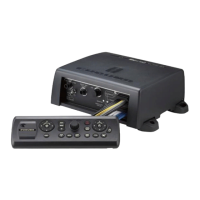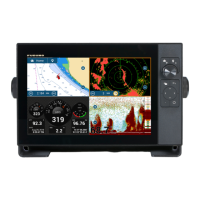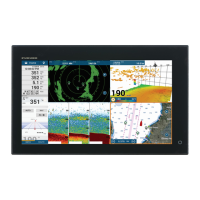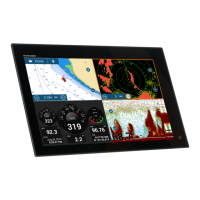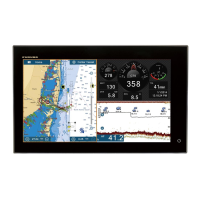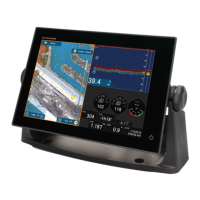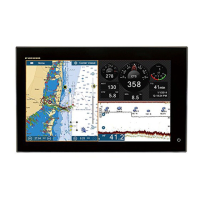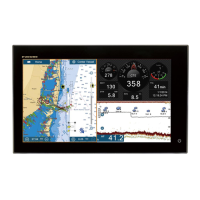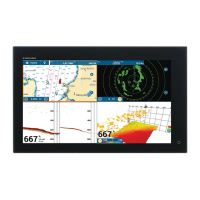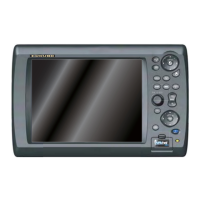6. RADAR
6-18
6.23 Radar Overlay Range Link
The radar overlay range link automatically keeps the chart scale and radar range in
sync. This feature helps you understand the relation between the radar and the chart.
You can activate or deactivate this feature from [Plotter Display]. See paragraph 3.2.3.
Note: The radar picture can look “out of focus” on long ranges when the range link is
active. This out of focus appearance does not indicate a problem, because it is a char-
acteristic of the digital zoom.
6.24 Dual-Range Display
Note: The DRS4DL does not have the dual-range display.
The dual-range display scans and displays two different radar ranges at the same
time, with a single antenna. There is no time delay between the two pictures and, with
the magnetron radar, you have separate control of each picture. (The solid state radar
has some restrictions. See the table below for details.) This feature lets you keep a
close watch on close-range targets and far targets.
To get the dual-range display, set dual-range displays in the display selection window.
See section 14.2 for the procedure. You can put the dual-range displays in the two-
way and three-way split screens.
Most radar functions can be adjusted independently. The table below shows radar
function and operability in the dual range mode, for both the magnetron radar and the
solid state radar. Note that, in the worst case, the maximum detection range may de-
crease by approx. 10 dB with the solid state radar.
Radar function
Availability in dual range mode
Magnetron radar Solid state radar
Route (show, hide) Independent Independent
AIS/DSC (show, hide) Independent Independent
Auto sea mode ([Advanced] or [Coastal]) Independent Interlocked
Echo average* Interlocked Interlocked
Echo stretch* Interlocked Interlocked
Echo trail Interlocked Interlocked
Gain Independent Interlocked
Heading line (hide temporarily) Independent Independent
Interference rejector Independent Interlocked
Short range displayLong range display
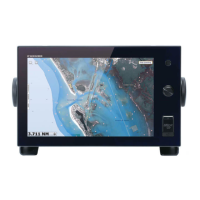
